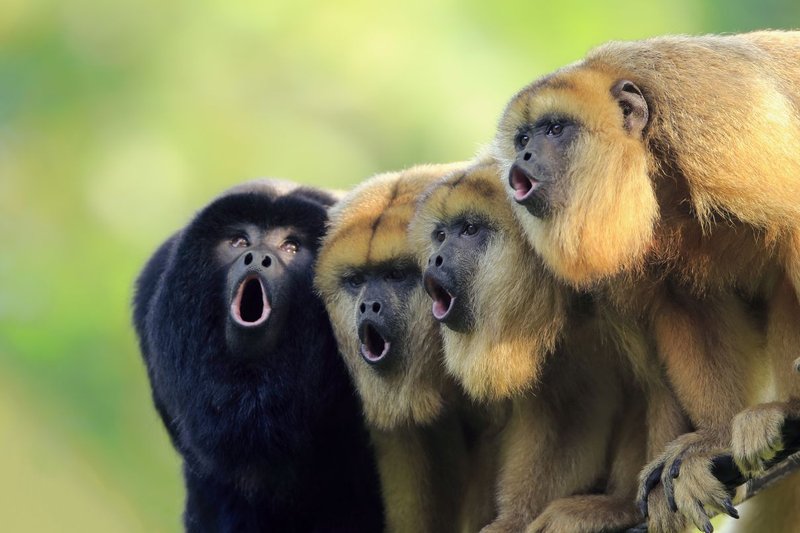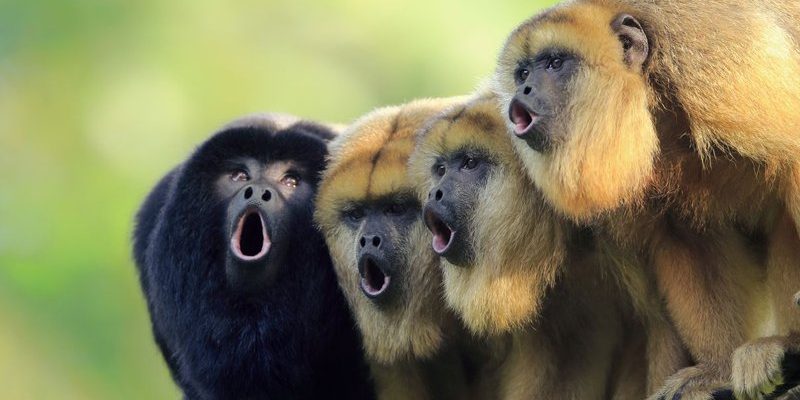
In many ways, raising young howler monkeys is like orchestrating a symphony where teamwork and communication play a huge role. The mother howler monkey typically takes on most of the responsibility during the early stages of her baby’s life. But, it’s not just a solo act; the entire troop gets involved. Let’s dive deeper into their parenting style and uncover how these fascinating creatures ensure the survival of their young.
The Role of the Mother Howler Monkey
Motherhood in howler monkeys is an essential and nurturing position. After a gestation period of about six months, a mother gives birth to a single baby, although twins are rare. The moment the baby is born, it clings to its mother’s fur, constantly hanging on as she moves through the treetops. Imagine a little backpack that you just can’t take off! This close physical bond helps keep the baby safe and secure as they navigate the challenges of the forest.
Mothers are incredibly attentive. They spend lots of time grooming their babies, which helps strengthen their bond. Grooming isn’t just about cleanliness; it’s a critical part of forming social connections. Additionally, mothers communicate with their young through soft vocalizations, teaching them important survival skills in a gentle way. You might find it sweet how these vocalizations are similar to soothing nursery rhymes we sing to children!
Father’s Involvement in Parenting
While the mother howler takes on a significant amount of responsibility, the role of fathers shouldn’t be underestimated. In contrast to many other animal species, male howler monkeys often play a supportive role in raising their young. They are known to help protect their families and provide some important social lessons.
Fathers can often be seen watching over their young from a distance, making sure no harm comes their way while the mother is busy. They also assist in foraging, making sure there’s enough food available for nursing mothers and growing babies. Picture a dad bringing home groceries—this can be similar to what male howler monkeys do by gathering fruit and leaves for their families. It’s teamwork at its best!
Learning Through Play
For young howler monkeys, playtime is crucial for development. Once they’re a bit older, typically around a few months, they begin to explore their surroundings. Playing with siblings and other troop members is how they learn to interact socially. This play isn’t just fun; it’s a vital way for them to develop the skills they’ll need later in life.
Through play, they practice climbing and swinging on branches, which are essential skills for survival in their treetop habitat. You might even see them tussling with each other in a playful scuffle, which helps them learn about strength and agility in a fun way. It’s like an outdoor gym class that teaches them vital survival techniques while allowing their personalities to shine!
Social Structure of Howler Monkey Troops
Howler monkeys live in social groups called troops, usually consisting of 5 to 15 individuals. This troop structure plays a significant role in raising young. The larger social group provides both support and protection. Having multiple adults around means that there are always eyes watching the little ones.
Troops communicate through complex vocalizations, and the famous howling serves multiple purposes—not just to establish territory but also to keep the group bonded. You could think of it as the jungle’s version of a family meeting, where everyone joins in to ensure they stay connected. This social support system helps the young learn the nuances of group living and essential survival tactics.
Nutrition for Growing Monkeys
Nutrition is a key part of a young howler monkey’s development. While they start with mother’s milk, they transition to solid foods by around six months. Their diet mainly consists of leaves, fruits, and flowers, which provide the necessary nutrients for healthy growth.
Mothers introduce their young to different foods, showing them what’s safe to eat. It’s like a taste test where the little ones learn their favorites while ensuring they’re consuming what they need for energy and growth. Interestingly, howler monkeys have a slow metabolism, which means they need to eat a lot to get the energy they require. Think of it as a toddler refusing to eat broccoli but learning to enjoy it eventually!
Challenges of Raising Young in the Wild
Raising young howler monkeys is not without its challenges. Predators, habitat loss, and food scarcity can create obstacles for both mothers and their babies. In the wild, mother howler monkeys have to be vigilant and protective. They often select areas that are safer for their young to play and explore.
Additionally, deforestation is a real concern for howler monkeys. As humans encroach on their habitats, it may lead to food shortages and increased competition for resources. Here’s the thing—conservation efforts are crucial. Protecting their natural habitat not only helps howler monkeys thrive but also ensures that future generations continue the circle of life in the jungle.
Raising young howler monkeys in the wild is a dynamic process filled with love, cooperation, and learning. From attentive mothers to supportive fathers and the strength of their social groups, these animals showcase effective parenting styles that ensure the survival of their species. Just like in human families, every member plays a role, and together they create a nurturing environment.
Understanding how howler monkeys raise their young gives us insightful glimpses into the complexities of animal parenting and the importance of preserving their habitats. As we unravel these fascinating stories from the animal kingdom, we realize that the importance of family, love, and cooperation is universal—no matter the species.

